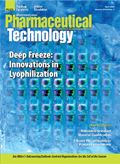Automation Vendor or Partner?
The role of automation suppliers is transforming to meet the pharma industry's demand for change.
As a result of growing challenges such as an expanding global market, increased competition, reduced product life cycles, modular processes, and changing product demand, pharmaceutical companies are searching for innovative ways to improve their production processes. Historically, the pharmaceutical industry has been conservative in adopting new manufacturing technologies. This caution can impede the ability to operate best-in-class facilities. But innovative solutions can bring benefits such as the following:
- Reduced production cycle times by using on-, in-, and/or at-line measurements and controls
- Increased yield and capacity
- Continuous processing to improve efficiency and manage variability
- Improvement in energy and material use
- Real-time release
- Increased automation to improve perator safety and reduce human errors
- Improved quality by design through better technology transfer.

Bob Lenich
As companies strive to achieve these improvements with fewer employees and resources, many are looking at automation suppliers as strategic partners rather than as vendors. The changing expectation is influencing automation suppliers' strategies and investments. Automation suppliers are expanding product solutions to perform new functions (e.g., ISA95 Level 3) and broadening their service capability to become main automation contractors (MACs). These strategies are reviewed below.
Expanding product functionality
In the current market environment, automation suppliers are investing in solutions that address ISA95 Level 3 operations-management functionality. The ISA95 Enterprise-Control System Integration standard helps manage people, equipment, materials, and energy within a manufacturing facility by defining data models, work activity, and the information exchange of operations management activities.
The ISA95 standard divides the management of manufacturing operations into four categories: production operations, inventory operations, quality operations, and maintenance operations. The activities defined in Levels 1–3 are critical to plant safety, reliability, efficiency, product quality, and maintaining regulatory compliance. Within Level 3, several operations-management functions are defined for each of these four categories: definition, resource management, detailed scheduling, dispatching, execution management, data collection, and analysis.

Joanne Salazar
Three ISA95 concepts critical to pharmaceutical-operations management include integrated workflow and recipe optimization, integrated documentation and document management, and integrated manufacturing operations throughout the entire facility. A single recipe, that addresses both manual and automated activities can optimize operations by reducing operator errors and variability, coordinating process steps, and minimizing engineering efforts. A single recipe also enables comprehensive batch documentation records to be generated in real time.
Managing documents extends far beyond electronic batch records to include information such as material-safety data sheets, standard operating procedures, design documents, testing documents, and training records. Regardless of the format or source, this information needs to be managed throughout a product's life cycle, and any change management must be addressed.
Facility integration optimizes resources and synchronizes interdependent activities. The data models and transaction standards outlined in ISA95 can lead to easy, maintainable, functional integration. Standards-based communication methods and web services can further ensure easy use, integration, and maintainability of these solutions. Overall, the models and standards allow companies to connect real-time plant floor manufacturing data with enterprise applications.
In addition, advanced control techniques such as real-time principle component analysis modeling can help optimize the manufacturing process. Predictive diagnostics can be implemented to avoid further equipment deviations. Other technology enhancements that improve manufacturing include wireless access and radio-frequency identifcation (RFID).
With these technologies, Level 3 solutions facilitate closed-loop control for manufacturing activities, thereby allowing pharmaceutical manufacturers to make business decisions in real time. In turn, the traditional real-time domain of automation suppliers is naturally extended into Level 3 functionality. Manufacturers will realize the benefits of having their complete real-time environment provided by a single partner.
Expanding service capability
As pharmaceutical manufacturers shift more responsibility to automation suppliers, suppliers are increasingly taking on the role of MACs and offering:
- Process automation systems
- Programmable logic controller
- Skid-mounted controls
- Cabinets and enclosures
- Instrumentation
- Wiring and wireless networks
- RFID, barcoding, and printing
- Portable and handheld devices
- ISA95 Level 3 manufacturing applications
- Integration of enterprise resource planning systems.
Relying on a single provider addresses historic challenges in implementing plantwide manufacturing solutions. Operational functions need to be evaluated based on organizational structure to determine the best fit into either the enterprise domain or the real-time plant floor arena. Technology can then be applied to achieve this functional structure. Using solutions from various suppliers can result in product overlaps and gaps in functionality. Partnering with a provider who has experience in applying the breadth of these applications, as well as investing in the supporting technology, minimizes potential gaps and overlaps.
When implementing plantwide integration solutions, the project team must work closely with multiple plant functions. Each operational organization has specific requirements that need to be addressed. Cross-functional work activity must be properly defined before selecting products and applying technology. In an ideal world, this cross-functional alignment is independent of the platform. In practice, however, some alignment decisions depend on the applications selected. Critical functions need to be implemented in a manner that enables easy adoption of the technology, thus ensuring its success.
Conclusion
As the pharmaceutical industry works with fewer resources, new approaches and roles are necessary. Pharmaceutical manufacturers, especially those that deal with multiple sites, must adopt standards to ensure easy integration and ongoing support of manufacturing-process solutions. An automation supplier can provide one focal point of responsibility for manufacturing automation to reduce solution risks, deliver improved project implementation time, and provide operational savings.
One life-sciences manufacturer, for example, built a green field facility with two filling lines. The company used an automation supplier, taking the approach described in this article, resulting in $1.1 million in savings. Automation was completed ahead of schedule and 9% under budget.
Manufacturers overall can lower implementation and ongoing support risks by selecting a long-term automation partner that is investing in products and services to improve operational excellence.
Bob Lenich is director of Syncade Suite Product Marketing and Joanne Salazar is manager of Syncade Suite Marketing Programs, both at Emerson Process Management, 12301 Research Blvd., Research Park Plaza, Bldg. 3, Austin, TX, 78759, tel. 512.834.7033 and 512.832.3448, Bob.Lenich@Emerson.com and Joanne.Salazar@Emerson.com

Drug Solutions Podcast: A Closer Look at mRNA in Oncology and Vaccines
April 30th 2024In this episode fo the Drug Solutions Podcast, etherna’s vice-president of Technology and Innovation, Stefaan De Koker, discusses the merits and challenges of using mRNA as the foundation for therapeutics in oncology as well as for vaccines.
PacBio Chosen as Tech Partner for Global Alzheimer’s Disease Research Project
April 23rd 2025The project, the North African Dementia Registry, will unite multiple entities for the purpose of developing a comprehensive dataset to advance the research community’s understanding of Alzheimer’s disease and other dementias in diverse populations.